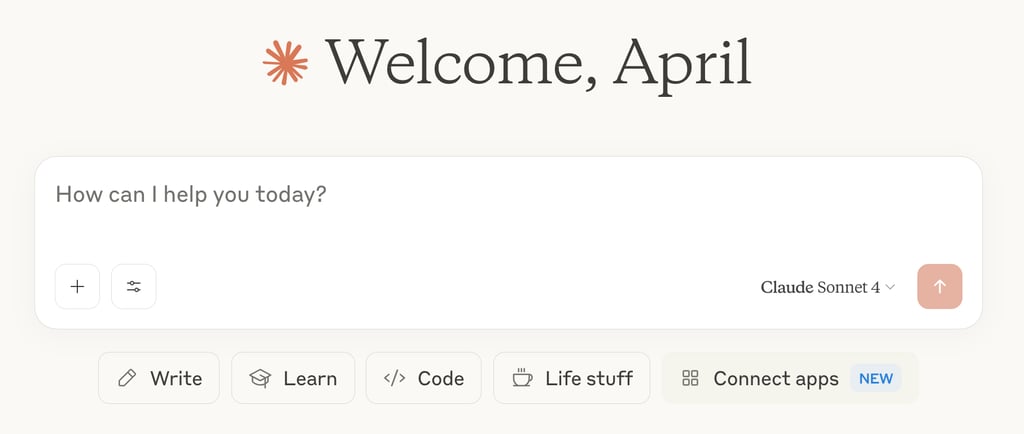How to Master AI Prompting for Content Strategy: A Practical Guide
Artificial intelligence has revolutionized content creation, but the difference between mediocre and exceptional AI-generated content often comes down to one critical factor: how well you prompt the AI. Whether you're developing blog posts, social media campaigns, or comprehensive content strategies, the quality of your prompts directly impacts the quality of your results.
AI PROMPTING
April J. North
2/1/20253 min read


The Foundation: Specificity Beats Generality
The most common mistake content strategists make is being too vague with their AI prompts. Instead of asking "Write about social media marketing," try "Create a 1,200-word blog post explaining how B2B SaaS companies can use LinkedIn to generate qualified leads, including three specific tactics and real-world examples."
The second prompt provides clear parameters: audience (B2B SaaS companies), platform (LinkedIn), goal (lead generation), format (blog post), length (1,200 words), and deliverables (three tactics with examples). This specificity gives the AI a clear framework to work within.
Context Is King
AI performs best when it understands the broader context of your content strategy. Before diving into specific requests, establish the foundation:
"I'm developing content for a sustainable fashion brand targeting millennials aged 25-35 who prioritize ethical consumption. Our brand voice is authentic, educational, and optimistic. We want to position ourselves as accessible experts who make sustainable living achievable."
This context informs every piece of content the AI generates, ensuring consistency across your entire content ecosystem.
The Power of Examples
Rather than hoping the AI understands your vision, show it exactly what you want. Provide examples of content that captures your desired tone, structure, or approach. You might write: "Here's an example of our brand voice in action: [insert example]. Create social media captions that match this tone while promoting our new recycled fabric collection."
Examples serve as guardrails, helping the AI understand not just what you want to say, but how you want to say it.
Structure Your Prompts for Success
Effective AI prompts for content strategy often follow this structure:
Role Definition: "You are an experienced content strategist specializing in B2B marketing."
Context Setting: "I'm working with a cybersecurity company that sells to mid-market businesses."
Specific Task: "Create an editorial calendar for Q2 that addresses the top three pain points our prospects face."
Parameters: "Include 12 blog post topics, 8 social media campaign ideas, and 4 email newsletter themes."
Success Criteria: "Each piece should be actionable, data-driven, and position us as thought leaders without being overly promotional."
Advanced Techniques for Content Strategy
Persona-Based Prompting: Instead of generic content, create prompts that speak to specific personas within your audience. "Write a LinkedIn article that resonates with cybersecurity directors at companies with 500-2000 employees who are evaluating new security solutions for the first time."
Competitive Analysis Integration: "Analyze the content approach of [competitor] and suggest five ways we can differentiate our content strategy while addressing the same audience needs."
Multi-Format Content Planning: "Take this core message about data privacy and adapt it for: a 2-minute video script, three social media posts, one email subject line, and a podcast interview talking point."
Common Pitfalls to Avoid
Prompt Chaining Without Purpose: Don't ask follow-up questions without clear direction. Instead of "Can you expand on that?", try "Expand the second point about email marketing automation with specific tools and implementation steps."
Ignoring Brand Constraints: Always include relevant brand guidelines, tone preferences, and content restrictions in your prompts. AI doesn't inherently know your brand's boundaries.
Overlooking Distribution Channels: Tailor prompts to specific platforms. Content for LinkedIn requires different language, length, and approach than TikTok or email newsletters.
Testing and Iteration
Treat AI prompting as an iterative process. Start with a basic prompt, evaluate the output, then refine your approach. Keep a library of your most successful prompts and adapt them for different projects.
Consider A/B testing different prompt approaches for the same content goal. You might find that asking for "conversational, expert advice" produces better results than requesting "authoritative, professional guidance" for your particular audience.
The Human Touch
Remember that AI is a powerful tool for content strategy, but it's not a replacement for strategic thinking. Use AI to generate ideas, create first drafts, and handle routine content tasks, but maintain human oversight for strategic decisions, brand voice consistency, and audience connection.
The most successful content strategists using AI aren't just prompt engineers—they're strategic thinkers who leverage AI to amplify their expertise and scale their impact.
Mastering AI prompting for content strategy requires practice, experimentation, and a deep understanding of both your audience and your tools. Start with these fundamentals, but don't be afraid to push boundaries and discover new approaches that work for your unique content challenges.
The future of content strategy isn't about replacing human creativity with AI—it's about using AI to unlock new levels of strategic thinking and creative execution.


